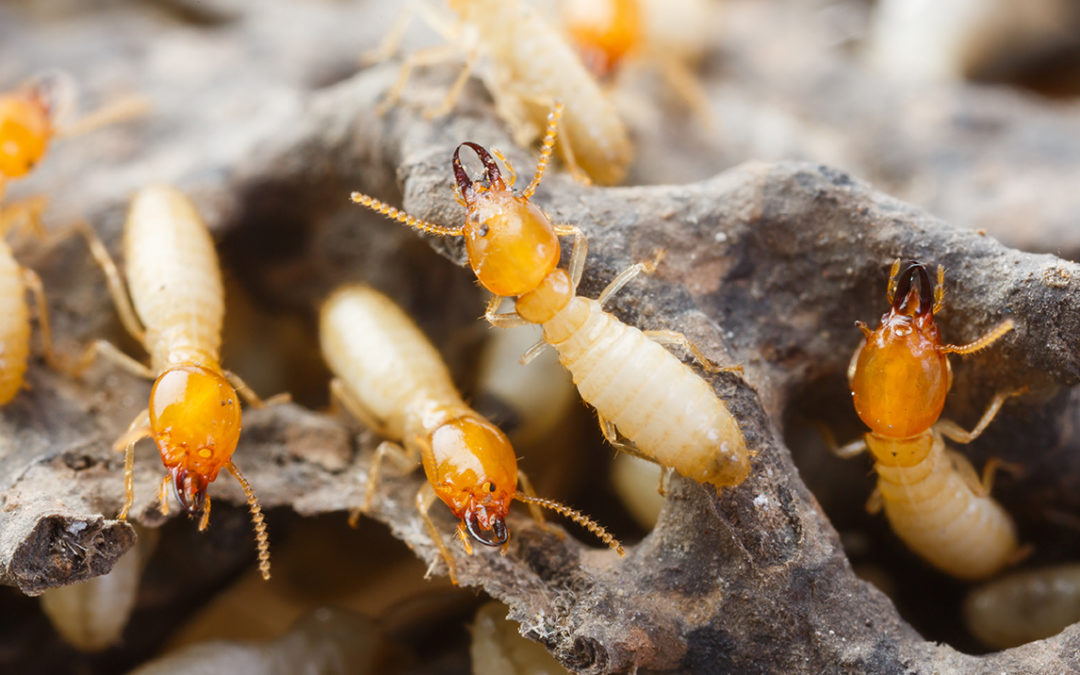Let’s be clear: Termites are bad for your home or business. In the U.S., it’s estimated that termites and similar pests cause around $30 billion in damage to crops and human-made structures each year. Repairing a home that’s been damaged by termites can cost an average of $3,000, so there’s a good reason for homeowners to want termites far from their house. At Premier Pest Management, we know a lot about termites and getting rid of them. Termites may be pests, but they’re also kind of fascinating. Here are four things you probably didn’t know about termites.
Most Termites Are Blind
If you’ve ever wondered if termites can see the damage they’re doing to a structure; the answer is probably not. In fact, most termites are blind. Termites have societies that can be similar to ants. Within a termite colony, king and queen termites usually do have eyes, but they don’t have keen vision. Most worker and soldier termites are blind, and some don’t have any eyes at all! Termites predominately navigate the world around them using chemical signals. In the cases where termites do have eyes and vision, it’s limited to helping them with the orientation toward light sources.
Speed Eating and Breeding
The reason that tiny termites can be such a huge problem boils down to their speed. Termites can reproduce quickly and eat things very quickly. When combined, that spells trouble for any structure near a colony of termites. It’s estimated that a medium-sized colony of Formosan termites (around 3 million termites) could eat one foot of a 2’ x 4’ wood in only two days! Under the ideal conditions, a colony of Formosan termites can cause extensive damage to a structure within six months.
A tiny termite problem can turn into a big problem very quickly. Termite queens can lay between 20,000 and 40,000 eggs a day, so it doesn’t take long to get from a few termites to a colony of 3 million. It’s even been estimated that there are 1,000 pounds of termites for every person on earth! At Premier Pest Management, we will do free termite inspection of your home or business to check for any signs of termite activity.
Termites are Good for the Environment
We started the article by talking about the damage termites do to human structures, but they also play a vital role in helping the environment. Their ability to eat through tough plant matter that makes them the bane of buildings, also allows termites to help recycle decaying trees into the new soil. By making their colonies in the ground, they aerate the land by building tunnels, which improves the health of the soil for the plants growing there. In wooded areas, termites are an essential part of promoting the growth of new trees. The things termites do that damage a structure are also the things that keep forests healthy.
Termites Never Sleep
Another reason termites can be so damaging to a structure is that termites are extremely hard workers. It’s believed that termites never sleep! So they have all the time in the world to munch on your home. Termites are affected by temperature. Termites might slow down, or even stop if the temperature gets low enough, but they aren’t sleeping. When insects enter this cold-induced state, it’s called diapause. However, most human-made structures are warm sufficient that termites don’t enter diapause. Without any reason to stop, termites will keep eating away at a structure until they, or the structure, are gone.
If you think your home may have a termite problem contact Premier Pest Management for a free termite inspection of your home or business. We will photograph any evidence of termite activity and then make a graph of your property showing exactly where the termite activity is occurring. We will also have a plan of action for how to go about treating it.


Recent Comments